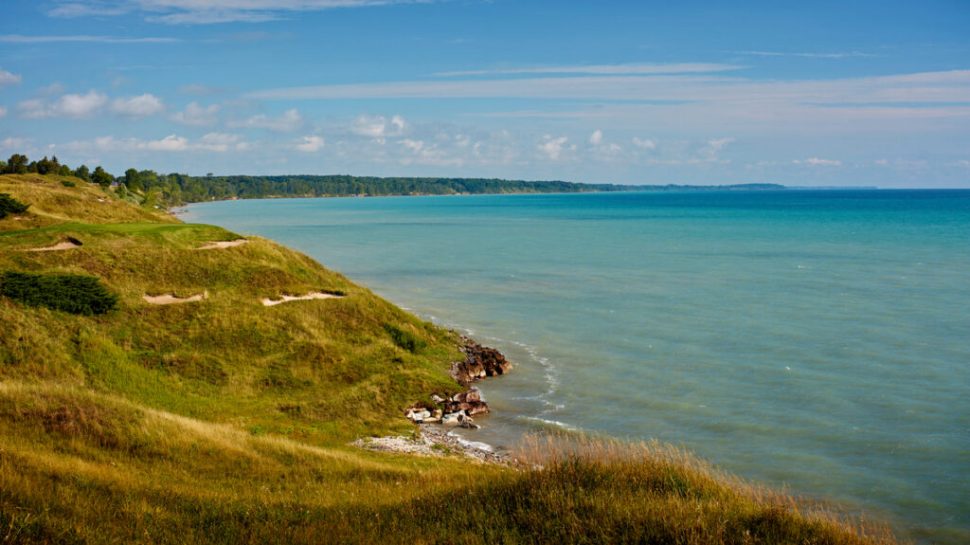
Estimated reading time: 18 minutes
Haven, WI. The 43rd edition of the Ryder Cup Matches commences Friday and the matches will be contested on one of the renowned designs of the late Pete Dye. Earlier this year, The Ocean Course at Kiawah, another Dye creation, hosted the PGA Championship. It was the first major event played on a Pete design since the legendary architect passed away in January 2020.Haven, WI. The 43rd edition of the Ryder Cup Matches commences Friday and the matches will be contested on one of the renowned designs of the late Pete Dye. Earlier this year, The Ocean Course at Kiawah, another Dye creation, hosted the PGA Championship. It was the first major event played on a Pete design since the legendary architect passed away in January 2020.
The Straits Course opened in 1998 and is wholly manufactured. Created on a two-mile stretch of dead flat land, the former abandoned army airbase occupies land adjacent to Lake Michigan. The 18-hole layout is quintessential Dye. The Straits layout presents numerous risk/reward challenges throughout the routing. The front nine runs clockwise and the inward half counter clockwise. Views of the Lake are seen from just about every hole.
The marching orders were simple: create a faux links reminiscent of the glorious Irish links courses. In the mold of such outstanding links layouts such as Ballybunion and Lahinch -- Dye fashioned a brawny layout of 7,790 yards.
The Straits Course is littered with over 1,000 bunkers - coming in all shapes and sizes. Leaving the safe fairway confines undoubtedly presents a number of ticklish situations for the players to face and overcome. One can quickly flashback to when Dustin Johnson was penalized for unknowingly grounding his club on the 18th hole in the final round of the 2010 PGA Championship and suffering the fate of being left outside the two-man playoff between eventual winner Martin Kaymer and Bubba Watson.
The Straits Course was a monumental project -- Dye found no pure sand on it. The soil was rocky and mostly clay -- even the beach was mostly rock -- so Dye had 13,126 truckloads of sand hauled in. The panorama of the finished project is truly an epic landscape and will provide stirring views for the global audience that will be watching the matches.
Four architects weigh in on the varied dimensions involved with this year's matches. The Dye connection is certainly front and center. Clearly the pressure will only intensify as each day of the competition continues right up through the 12 singles matches planned for Sunday.
Pete Dye was a visionary who created something from literally nothing along the Lake Michigan beachfront in Wisconsin. Its more than likely a wry smile would cross his face as players from both teams encounter a Straits Course that is truly to "Dye-fore."
***
You hear the words "Whistling Straits" -- what comes to mind?
SMYERS: A beautiful golf course that is a thorough examination of one’s golfing talents and abilities, both mental and physical.
CURLEY: A wonderful blend of stunning site with commanding views along Lake Michigan coastline and a course that is punctuated with dramatic design elements that create incredible variety.
FRY: A really hard course with bunkers, mounding and steep slopes everywhere and where the winds often blow really hard along the coastline
KELLY: Bunkers, wind and Pete Dye’s quote “This course is popcorn, but sometimes people choke on popcorn.”
The first of 8 holes that run parallel to Lake Michigan, The Straits #2, Cross Country is a par 5 adventure complete with a cluster of dunes down the right side of the fairway and pot bunker 35 yards short of the green just waiting to send your quest off course. #WhistlingStraits pic.twitter.com/icCpCVxa8r
— Golf Kohler (@GolfKohler) May 4, 2021
Among the number of stellar designs created by Pete Dye -- where would you place the Straits Course?
FRY: I like Whistling Straits and it's a great test of golf for skilled golfers but I would rate Casa de Campo, Honors Course, TPC Sawgrass, the Golf Club and the Ocean Course at Kiawah Island ahead of it.
KELLY: Near the top. Aesthetically somewhat of an outlier but along with Sawgrass and Kiawah it’s made a big contribution to Pete’s impact on golf course design and professional tournament golf. Behind the wild aesthetics it’s a fun yet tough course just as you’d expect from Pete.
SMYERS: I have been a great admirer of Pete’s courses. He has produced great courses within various environments. The Straits course which is nestled along the shores of Lake Michigan has wonderful vistas. Between this and the course's demand on strategy and shotmaking, I would put this course on the top of his accomplishments.
CURLEY: Top three -- maybe first. I am a big fan.
Once asked if the Straits would play too difficult, Pete Dye said, “Naah, this course is popcorn. But, sometimes, people choke on popcorn.” #WhistlingStraits pic.twitter.com/eqJMj5gKjj
— Golf Kohler (@GolfKohler) August 9, 2019
The Straits Course has hosted three PGA Championships in recent years -- how critical will course set-up be for the matches and do the Americans have the advantage even though no American won any of the three PGAs played there?
CURLEY: Although the course is relatively new, the increase in length off the tee has made enormous advances since its completion and I would think a set-up demanding length will favor the American team. It would seem a lie a wayward player encounters at 320 plus yards -- thick vs. thin and playable -- will dictate how aggressive they can be. I imagine there's been an effort to leave surfaces that, while maybe scruffy, still leave the ability to advance the ball to the green.
SMYERS: Course set up is everything in preparing for elite competition. Wind, the indivisible hazard, is always a constant factor at the Straits course. The fairways should be ample, but with firm putting surfaces and the opportunity to position hole locations in hard to access areas driving the ball in the fairway will be critical, as having the ability to control spin on iron shots will be necessary to set up birdie opportunities. Because of the ever-constant wind I do not expect the green speeds to be excessive. I am not sure the course set up will favor any one team. Both teams are very rich in talent and all players have experience on a wide variety of courses. In the end it will come down to who has the most opportunities for birdies.
KELLY: The course isn’t one which can be manipulated too much with cut lines, but the combination of the set-up and weather will be very important. There are plenty of opportunities to tuck pins, creating some fantastic match-play, do or die situations, but I think we will mainly see more generous pins and the course playing long with the aim of favoring the Americans strength off the tee and on the greens. If the wind blows offshore, it could play really tough which might favor the Europeans.
FRY: In years past, Captains have got involved with the superintendents of the courses to host the event a year or more in advance to discuss ways to "favor" the home team. In Paris at Le Golf National for the 2018 Ryder Cup Thomas Bjorn suggested thicker rough, tighter fairways and slightly slower green speeds to throw the American side off. At the Ryder Cup at Hazeltine in 2016 USA Captain Davis Love III had the fairways made slightly wider, the rough cut lower and faster green speeds. In both cases the Captains believed they were doing things to benefit the home team and in both cases the home team won.
I don't know if Captain Stricker has suggested anything to increase the American's chances of winning but I don't believe the course setup will help them win at Whistling Straits. The course is so penal off the tee that fairways can't be made wider nor the rough cut because when missing the fairways at Whistling Straits it gets penalizing very quickly. I believe the biggest factor is weather. Good weather and little wind is the best-case scenario for the American side. The European team grew up playing in the wind, cold and rain and I feel those conditions would benefit them.
What specific hole stands out among the 18?
KELLY: The 5th is like nothing I’ve ever seen before. Pete is known for the acute angles he places hazards at, but this is next level. Downwind big hitters can take on the corner and cut a huge chunk off the hole and improve the angle into the green. Ironically, it is the least ‘Whistling Straits’ style hole aesthetically.
CURLEY: Probably the 18th. Easy choice as it plays inland away from the dominant shoreline and has a stream element. But the key is the back tee is set low with little visual of the correct line to the fairway. I remember Pete made a key decision to often purposely place elite players low rather than the typical staggered and elevated increase in tee height normally associated with back tees. It was another way he wanted to stress the elite player with a demand for trust in a line not 100% seen. Knowing that, somewhere out there, water is waiting left, this further adds to the bail-out right often seen and what Dustin Johnson so famously encountered.
FRY: The 4th on the Straits Course has always stood out to me. It's a long par-4 with a massive complex of mounding down the entire right side of the hole with a fairway sloping from the right to left which helps balls roll precariously close to the bunkers and dunes that create the barrier before the hole drops off it's steep banks into Lake Michigan. If you hit the fairway you're left with a long iron into a green that hugs close to the edge of a slope that goes down steeply to the lake. A terrifying hole where a par 4 is a great score.
SMYERS: The 17th hole, which like the 17th at the Stadium Course at TPC, will create a tremendous amount of interest. This mid length par three has dramatic views of Lake Michigan. The long narrow putting surface is flanked on the left by an extremely deep bunker. Bunkers, hillsides and swales protect the right. A miss right or left makes for an extremely difficult up and down. The hole not only occupies a strong landscape setting but requires excellent shotmaking.
Hole 17: Pinched Nerve
— Ryder Cup (@rydercup) September 18, 2021
It may be one of the most picturesque par 3's in the world but the wind off Lake Michigan means club choice can vary massively.@Aon_plc | #RyderCupAon pic.twitter.com/6NFwy8i8Wm
If you had one hole to modify / improve, which one would it be?
SMYERS: The golf course has very good rhythm, balance and requires one to execute a strong variety of golf shots. I would be very hesitant to change or alter anything.
CURLEY: Nothing, but perhaps, a bit more width off the tee on some of the holes. Not an issue for this event.
FRY: It would be the 18th. Has a poorly defined tee shot and incredibly difficult second shot. On a course that is manufactured this one really stands out.
KELLY: There really isn’t an obvious ‘weak’ hole that I see being drastically improved. Some may not like the 5th, but I find it interesting, so I’d probably look at the 9th or 15th. You could move the tees on the 9th to the right to create a more interesting angle off the tee and adapt the landing area. I guess Pete put them where they are as it provides a nice long view straight up the hole to the clubhouse.
Choose your next shot wisely. Hole 7: Shipwrecked. #WhistlingStraits pic.twitter.com/eVIsZnknWC
— Golf Kohler (@GolfKohler) July 15, 2019
What's your assessment on the sheer number of bunkers on the Staits Course? Was Pete in overkill mode in including so many?
KELLY: It is overkill, but I’m all for going full bore if you are trying to be bold, rather than half-baked attempts. With sustainability such an important issue moving forward and with increasing pressures on resources such as sand it perhaps wouldn’t be right to attempt something similar now though. I’m not sure the spectators will appreciate having to walk through some of them either!
FRY: If I remember correctly there are close to 1,000 bunkers at Whistling Straits which comes to close to 60 per hole with perhaps only 200 or so really coming into play. So what's really needed -- 200 bunkers or close to 1,000? I wouldn't have put close to 1,000 bunkers on the course. Was Pete in overkill mode in including so many? Perhaps. But I love what Pete did here and it's one of the most memorable things about the course. As they say -- beauty is in the eye of the beholder.
SMYERS: Pete was attempting to create a sandy links feel to the site. I am not sure he pulled it off, but the number of bunkers is something that everyone talks about.
CURLEY: There are well over a thousand sandy hollows that are not a bunker in the usual sense of the word. These are features in non-turf areas that collect and allow recovery without hunting endlessly for balls. They create a striking visual image that's quite unique. I was fortunate to visit the site during construction -- I was working on another course with Pete and came to review those plans with him. There were hundreds and hundreds of these hollows strewn across the landscape, all with black 4-inch drain line sticking up into the sky. He had essentially bought all the drain line available in the region and had no idea how much he had used! I think the look is fantastic and the playability concept spot on.
May the odds be in your favor. #WhistlingStraits pic.twitter.com/amPGCEllOk
— Golf Kohler (@GolfKohler) March 29, 2019
How impactful will the timing of the matches be at the Straits Course with the event taking place in late September in Wisconsin?
CURLEY: I would think the timing is perfect.
KELLY: The potential for poor weather and strong cold winds could be a big factor. Logic would suggest it will favor Europe but with their team being dominated by players who have largely been US based recently due to Covid I don’t think it will be a big differentiator. Tough for both teams, but interesting for the fans.
SMYERS: Late September is a beautiful time of year in Wisconsin, but if a cold front should arrive it could create some interesting conditions. As most of the tournaments in the US are in warm conditions and the European events can experience cooler conditions, the advantage could go to the Europeans.
FRY: Obviously, weather in Kohler, Wisconsin in late September could become a huge part of the story. If the weather is nice with sunshine and average to slightly above average temperatures with normal winds everything will be fine but if they get below average temperatures with lows in the 30s and highs only in the 50s with the wind blowing 12 to 15 mph or above the course will play incredibly difficult and would be uncomfortable for both the players and spectators.
Scenic view of Lake Michigan and challenging terrain. Experience Hole 13, Cliff Hanger, at #WhistlingStraits. #GolfKohler pic.twitter.com/xlsrwbAx7q
— Golf Kohler (@GolfKohler) March 7, 2019
In the years to come -- what will be remembered most from the career of Pete Dye?
KELLY: I think of his ability to unsettle the world’s best without resorting to excessively penal golf. Strong angles and cleverly placed penal hazards within a strategic design such as the nasty pot bunker at the front of the 6th on The Straits Course, separated him from many of his contemporaries. He also didn’t pander to the pros when criticized and his courses are better for it.
SMYERS: Early in my career I spent and played much golf with Pete. He always emphasized to me to do unique work and to make your product stand out and be identifiable. I will always remember him and his work as being one of a kind. In a very good way.
FRY: Tough question because he will be remembered for so many things such as the architects he mentored, fabulous courses he designed, his incredible sense of humor, his great storytelling, the 17th hole at TPC Sawgrass, etc. I will remember him most for the non-traditional designs he did and how he got into the minds of the best players in the world. He was one of a kind!
CURLEY: His ability to produce so many stellar courses at very high levels of quality, quite often from less that great properties where he had to “create “ rather than “find” golf holes. Compare Pete’s sites to, say, Coore-Crenshaw, not a fair start. His ratio of highly rated courses per number of completed efforts is unparalleled. He also will be known for having produced a long list of associates that went on to great careers.
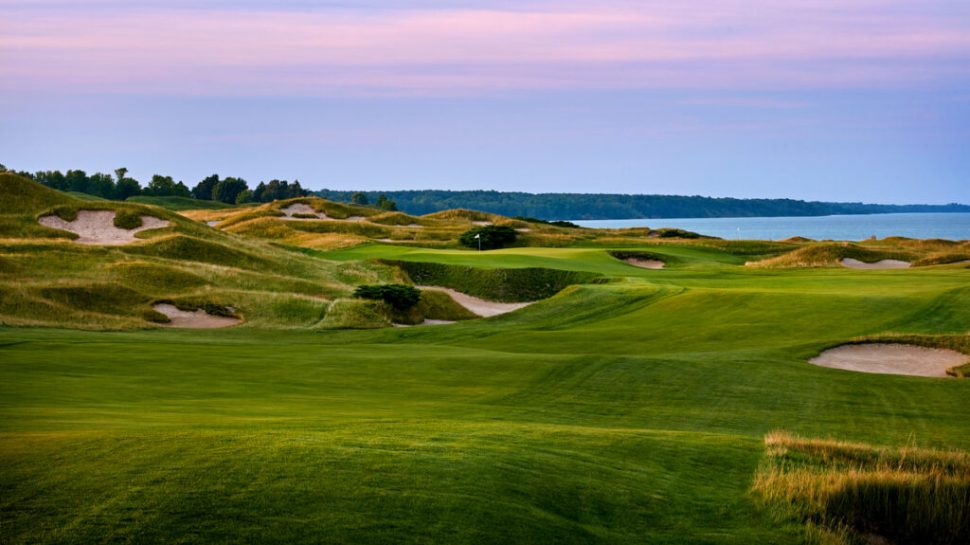
You've got one course to play the Ryder Cup on each side of the pond -- given the nature of how logistics have to be weighed -- what courses would you like to see the matches played?
FRY: Pebble Beach perhaps the home of American golf & St. Andrews because it is the home of golf. In my dreams and probably not logistically possible would be to play the Ryder Cup at the National Golf Links of America. The Euros would wonder where they were playing.
SMYERS: Logistically Whistling Straights is as good as anything. That along with the excitement the course has to offer makes it an ideal venue. I would like to think a good venue around London would be exciting. Chart Hills, a course I designed along with Nick Faldo, would check all of the boxes for logistics and shotmaking.
CURLEY: I am a west coast guy from Pebble Beach, but the best selection for a U.S. choice would need to be on the East Coast for TV purposes to accommodate the most time zones. The beauty of the Ryder Cup is that spectators can be limited when compared with a normal event, therefore more courses come into play that have limited access for spectators. That said, I would love to see Pine Valley, golf’s greatest design and a demanding match play course as a consideration.
KELLY: The huge animal the Ryder Cup has become drastically reduces the options especially in Europe. NGLA would be the dream in the US but practically it’s not feasible so Shinnecock Hills without the US Open setup maybe? In Europe it would be nice to see it played over a true links, Royal Portrush with the boisterous Irish crowd would be grand!
Hole 14: Widow's Watch
— Ryder Cup (@rydercup) September 15, 2021
The decision you make off the tee on this short par 4 will be dictated by the score of your match.
@Aon_plc | #RyderCupAon pic.twitter.com/cJnqvbBR6L
Prediction for the matches?
KELLY: Tighter than Paris, 15-13 with Europe winning obviously!
FRY: USA wins - 15 ½ points to 13 ½ points
CURLEY: Close down to the wire -- The 18th will prove to be a hero maker.
SMYERS: I am never good at predicting but the ones with the best iron play will prevail.
***
The Participants
Dana Fry
Partner
Fry Straka Global Golf Design
www.frystraka.com
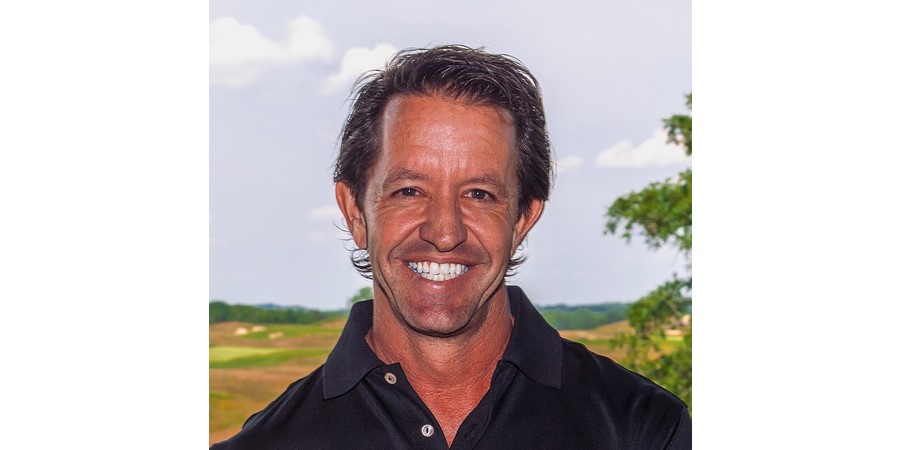
Working for Fazio Golf Course Design for 5 years, partnering for 24 years with Dr. Michael Hurdzan and currently with Jason Straka for 9 years. A background of formal education, field training and artistic design talent forms the consummate mix of practical and aesthetic creativity that the 59-year-old devotes to the worldwide endeavors of Fry Straka Global Golf Design.
Noted courses: Calusa Pines, Erin Hills, Shelter Harbor, Devil's Paintbrush, Naples National, South Course at Arcadia Bluffs. Member ASGCA.
Brian Curley
Schmidt-Curley Design
www.schmidt-curley.com
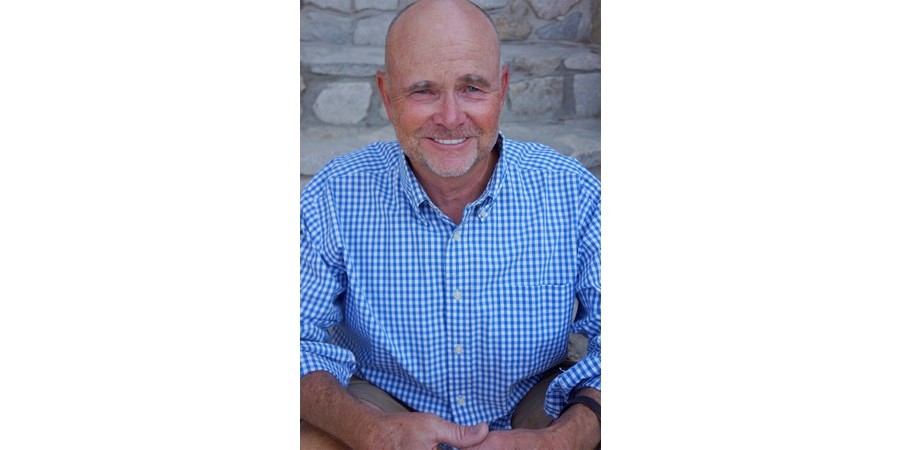
Raised in Pebble Beach where he caddied the iconic courses of the area provided the spark in driving an early interest in golf course architecture. His background began with Landmark Land Company, assisting Pete Dye on many courses including PGA West, and The Ocean Course at Kiawah Island Resort. The long time ASGCA member has spent much of the last 20 plus years focusing on Asia including Mission Hills Golf Club where he created 22 courses, 12 with tour signatures and 10 his own design and is now busy mostly in Vietnam.
Steve Smyers
President
Steve Smyers Golf Course Architects
www.stevesmyers.com
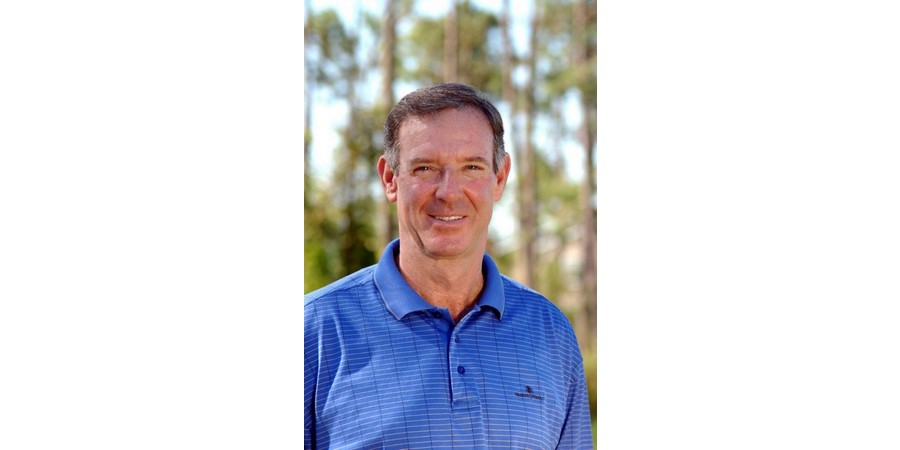
Steve Smyers has designed and built courses on 6 continents -- Chart Hills London (with Sir Nick Faldo); Maridoe, Dallas, Texas; The Pfau Course at Indiana University; Butterfield, Oak Brook, Illinois; Old Memorial, Tampa, Florida; Isleworth Golf and Country Club, Orlando, Florida -- are several of his creations. He is Past President American Society of Golf Architects (ASGCA) 2015 and a member of the United States Golf Association (USGA) Executive Committee 2006-2012.
Tom Kelly
Design Associate
European Golf Design
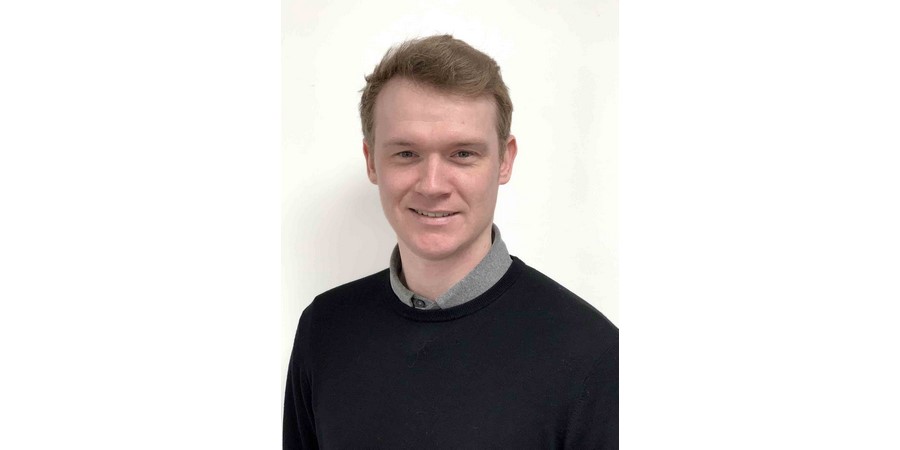
35-year-old Tom Kelly is just starting out on his career in golf course design having recently graduated with distinction from the E.I.G.C.A.’s Vocational Qualification in Golf Course Design. Experience in greenkeeping and working for one of Europe’s leading golf course contractors led him to joining European Golf Design in 2018, the firm responsible for the redesign of the Twenty Ten Course at Celtic Manor (by Ross McMurray) which hosted the 2010 Ryder Cup and the forthcoming 2023 venue, Golf Club Marco Simone in Rome, Italy (by Dave Sampson).



